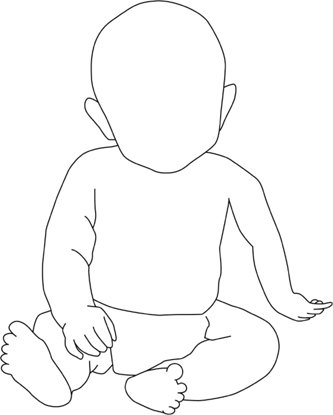What is the cause of obstetric brachial plexus palsy?
Traction injury to the brachial plexus during the birth process due to excessive lateral flexion of the neck. When the fetus is delivered in cephalic presentation, shoulder dystocia can cause excessive lateral flexion of the neck. When the fetus is delivered in breech presentation, difficulty with delivery of the head after the body has emerged, can cause the same problem.
 What is the estimated incidence of obstetric brachial plexus palsy?
What is the estimated incidence of obstetric brachial plexus palsy?
0.2% to 4% of live births globally, with higher incidence in underdeveloped countries with poor obstetrical care.
 What maternal factors may be associated with obstetric brachial plexus palsy?
What maternal factors may be associated with obstetric brachial plexus palsy?
1. Diabetes
2. Preeclampsia
3. Long duration of labor
4. History of delivery problem or fetus brachial plexus injury with prior pregnancy
 What fetal factors may be associated with obstetric brachial plexus palsy?
What fetal factors may be associated with obstetric brachial plexus palsy?
1. Large fetus for gestational age
2. History of humeral fracture or clavicle fracture during birth
 What factors during birth may be associated with obstetric brachial plexus palsy?
What factors during birth may be associated with obstetric brachial plexus palsy?
1. Difficult arm or head extraction in breech deliveries
2. Shoulder dystocia in vertex deliveries
3. Forceps or vacuum use during delivery
 Does Cesarean section (C-section) protect against obstetric brachial plexus palsy?
Does Cesarean section (C-section) protect against obstetric brachial plexus palsy?
C-section helps to lower, but not completely eliminate the risk of obstetric brachial plexus injury. There is a reported ~1% rate of obstetric brachial plexus injury associated with C-section.
 What are the common types and incidence of obstetric brachial plexus injuries?
What are the common types and incidence of obstetric brachial plexus injuries?
1. Erb palsy (~60%), involving C5 and C6.
2. Extended Erb palsy (~20%), involving C5, C6, and C7.
3. Total brachial plexus palsy (~20%), involving C5, C6, C7, C8, and T1
4. Klumpke palsy (<1%), involving C8 and T1.
 What is the typical posture of Erb palsy (Figure 39-1)?
What is the typical posture of Erb palsy (Figure 39-1)?
Figure 39-1
Stay updated, free articles. Join our Telegram channel

Full access? Get Clinical Tree



